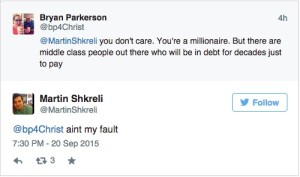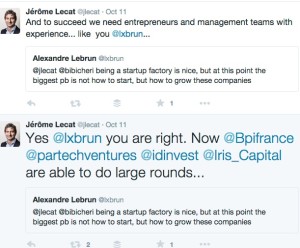CEOS ON TWITTER: Dos and Don’ts
Twitter’s role in corporate communication strategies tends to be approached from a legacy media, broadcast format of interaction (e.g. elites acknowledging and addressing elites with an unacknowledged audience of followers/viewers witnessing these exchanges).
This has the unintended consequence of enabling a distancing effect with followers — making the CEO less proxemic (socially speaking) to average consumers and ‘fans’.
This is because the focus CEOs tend to have when they engage in self-mediation practices via Twitter seems to be more oriented towards a solitary goal of simply enhancing the CEO’s individual social status in an effort to build individual social capital as a thought leader among elites — this is short sighted and ultimately takes the ’social’ out of ’social media.’
What we need are more personal reflections and acknowledgment of others (who are following them) from CEOs engaged in tweeting — they need to be more socially accessible in order to build a culture among their followers and to drive home their individual identity as a leader as well as the identity of the brand they are leading.
Don’t do this:
In August 2015, @MartinShkreli, the founder and CEO of Turing Pharmaceuticals, caused a huge upset by raising the price of a pill called Daraprim, from $13.50 to $750. In September, he used Twitter as his soapbox to respond to a NY Times article blasting him for this move. Unfortunately, his responses to the public and to the media on Twitter showed how immature, irresponsible and naive the 32-year- old CEO really is.
A Techcrunch article written by Lucas Matney includes some of the tweets. Here is one example:
The age old saying, if you do not have something constructive to say, keep your mouth shut. The same adage holds for Twitter. A CEO must be very careful what is Tweeted. It can affect a company’s valuation, impact personnel, and even give the competition an edge. With his mercurial rise to wealth, @MartinShkreli, lost sight of serving the customer, put patients relying on a drug at risk, damaged his reputation and gave his company a black eye.
This is what works:
CEO and founder of hot startup @Scality, Jerome Lecat has used Twitter to bring attention to new ideas about data storage in the cloud, share what he finds important, and talk about what is trending in his industry. He also compliments people, he offers tips, he builds team spirit with his simple words. Rather than focusing on his personal brand, Lecat uses Twitter to engage his constituents and keeps them interested in and focused on the Scality brand.
CEOs have very powerful voices. In fact, everything a CEO writes and publishes publicly communicates the character and value of a brand. To be successful, CEO’s must be mindful of what they say, have a clear intention for everything they post on Twitter, and engage with people. Her/His Tweets can make or break the trust people have in the company.



